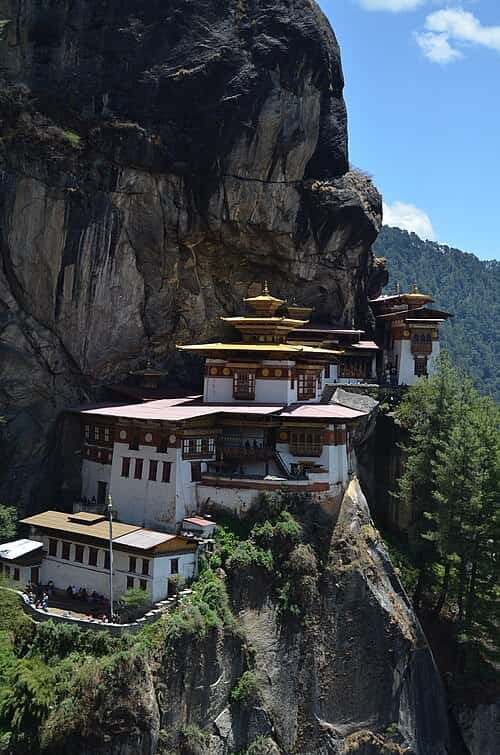(1)(1).jpg)
Paro Taktsang/Tiger’s Nest Monastery - Bhutan
Bhutan is a small, landlocked country in the eastern Himalayas, renowned for its breathtaking landscapes, Buddhist culture, and its commitment to Gross National Happiness (GNH). It is often referred to as the "Land of the Thunder Dragon” and is known for its environment, with over 70% of the country covered in forests. One of its most iconic landmarks is the Paro Taktsang (Tiger’s Nest Monastery), a sacred Buddhist site, perched 900 meters above the Paro Valley floor at an elevation of about 3,120 meters (10,240 feet) above sea level.
The Tiger’s Nest Monastery, built in 1692, is one of Bhutan’s most esteemed pilgrimage sites. According to legend, Guru Rinpoche (Padmasambhava, also known as the Precious Guru), the founder of Himalayan Buddhism, is said to have flown to this location on the back of a tigress in the 8th century to meditate in a cave, calming evil spirits and spreading Buddhism. The monastery consists of several temples and meditation caves, which can only be accessed by a steep hike or mule ride.
The Tiger’s Nest Monastery symbolises Bhutan’s spiritual devotion and harmony with nature, attracting tourists and pilgrims alike. Visiting this sacred site offers incredible views as well as a glimpse into Bhutan’s spiritual past and Buddhist traditions.
Bhutan’s spiritual heritage and natural beauty make it a unique travel destination. The country strictly regulates tourism to preserve its culture and environment, requiring visitors to pay a daily fee. Beyond the Tiger’s Nest, Bhutan offers other cultural treasures like Punakha Dzong, Thimphu’s Buddha Dordenma statue, and vibrant festivals (Tshechus) featuring masked dances. As the only carbon-negative country in the world, Bhutan balances tradition with innovation while protecting its wilderness, including endangered species such as the Bengal tiger.


